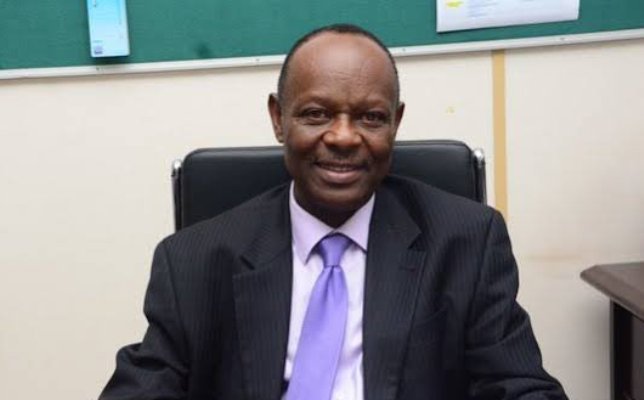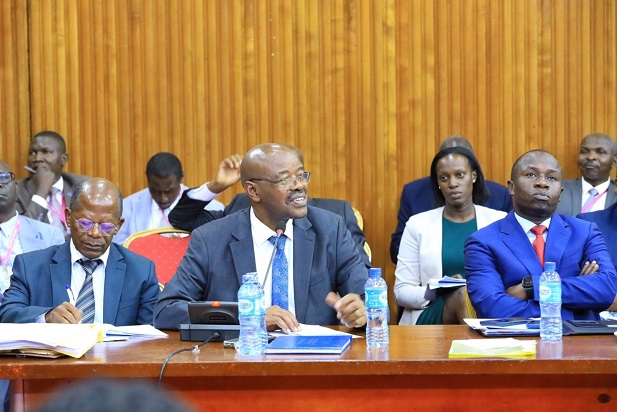The foundation stone laid by the late President Idi Amin Dada on June 3rd, 1975 at the Muslim Martyr’s Site in Namugongo is missing. Only a green small wall stands where Amin laid the foundation stone. “foundation stone was laid by Gen Idi Amin Dada in 1975 in memory of Muslim Martyrs killed at …” reads the inscription on the wall, which is surrounded by sand and is close to a lavatory that has been under construction since 2014. Close by are signposts indicating the place as a tourist site.
The signposts are broken and lie on the ground. Sheikh Suudi Nyombi, who heads the committee striving for the recognition of the Muslim Martyrs killed by Kabaka Muteesa I in 1877, says that the foundation stone was stolen several years ago by some Muslims who opposed the recognition of the Muslim martyrs.
He says that the Muslims think that recognizing the area as a site of martyrdom might mislead Muslims to start venerating them and digress from the teachings of the Quran. On the 1st of June each year, a few Muslims gather at Masjid Noor Namugongo to remember and pray for the martyrs.
This is not a pilgrimage like for the Anglicans and Catholics as Muslims only go for pilgrimage in Mecca and Medina. These prayers are held annually at the site of their martyrdom beseeching God to forgive them for their wrongs and to grant them, eternal life. These Martyrs having been the first Muslims in their families need to be prayed for because they didn’t leave any Muslim relatives behind.
Sheikh Nyombi says that the mosque leadership revived the prayers on June 3rd, 2009 for these martyrs following the footsteps of President Amin who started the prayers in memory of the martyrs in 1975.
Sheikh Mohammed Guyidde, the Imam of Masjid Noor says that had it not been for a lay leader at the Anglican church informing Muslims about the martyrs, perhaps to date no one would have known that Muslims were killed at Namugongo.
Ahead of Pope Paul VI’s visit to Namugongo on August 2nd, 1969, the lay leader only identified as Mr. Kamya asked four Muslims staying in the area then, about their preparations to welcome the Pope. The Muslims informed him that they had nothing to do with the pope. It is then that Mr. Kamya informed them that 73 Muslims were killed at the site by Muteesa I because of their religion.
Imam Mohammed says that this drew the attention of Muslims to learn more about the Muslim martyrs. It is against this background that President Amin after learning that history acquired land opposite the Anglican Church Martyrs shrine and laid a foundation for the mosque on June 3, 1975. A small mosque made of mud and iron sheets was built at the site to coincide with the martyr’s day celebrations that year.
Background to the killing of the martyrs.
In his book Empisa z’Abaganda, Sir Apollo Kaggwa explains how the Moslems were killed. “Kabaka Muteesa I converted to Islam, which he learned from the Arabs who had entered his father’s court. Muteesa was so committed to Islam, that he even ordered a mosque to be built at his palace in Kasubi, then known as Nabulagala. He held a grand feast to celebrate the opening of the new mosque and several cows, goats, and chickens were slaughtered for the occasion with the Kabaka himself slaughtering some,” he wrote.
It is said several of the Muslim courtiers ate the food and refused to touch the meat because uncircumcised Muslims had slaughtered the animals. Angry, the Kabaka construed it as an act of treason and ordered all those who had refused to eat the meat to be arrested. When the King’s officers inquired why they had not touched the meat, they told them to go back and ask the king to send them a live cow and goat so that they could slaughter it themselves.
When they continuously refused to eat the meat of cows slaughtered by the king on grounds that he was uncircumcised, the Kabaka ordered his chief executioner to kill them. They were driven to Namugongo, the execution site. More than 70 martyrs were burnt to death that day. The exact date and month of their martyrdom are not known but it said, they were marched to Namugongo and killed in 1877. More than 70 martyrs were burnt to death that day.
Apollo Kaggwa identifies some of the Muslim martyrs as Mponye Buwonyi, Muddu Awulira, Biira, Bamutalira, and Mukwanga. Others are Kaganyulo, Bazzekuketa, Kalule, Nsereko and Kisegula. Also Mabende, Mukeka, Namwanira, Mafembe, and Muwanga. Three of them; Yusuf Sebakiwa, Amulane Tuzinde and Musirimu Lwanga died during the long trek to Namugongo.
Sheikh Suudi Nyombi says that June 3rd should in reality be the day the Muslims celebrate their martyrs because the last martyrs to be killed were Muslims on June 3rd, 1886 by Mwanga after the Christian martyrs. These Muslims he says were killed in different locations within Namugongo, which is now a residential area.
Muslims are commemorating the martyrs with a session on the History of Islam from its start in Buganda and its spread in Uganda up to date. This will be followed by memorial prayers and a meal for the faithful. There is still a lot of effort needed to popularize the Muslim martyrs by disseminating information to Muslims across the country who were ignorant about their existence and to sort out the theological conflicts barring many from recognizing these martyrs.
–URN





